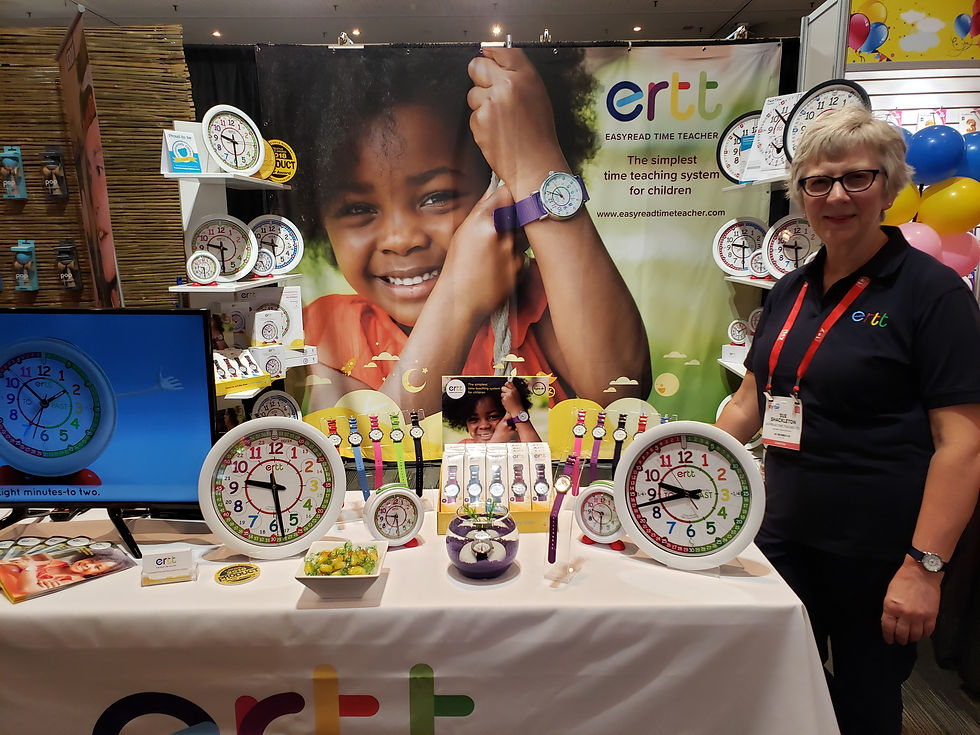EasyRead Time Teacher teaches kids the 'basic life skill' of reading analog time

Sue Shackleton at EasyRead Time Teacher's Toy Fair booth
Kids today are missing out on “a basic life skill,” said Sue Shackleton this week at Toy Fair, specifically, how to tell time without a digital timepiece.
“They’re growing up in a digital age and see mostly digital clocks,” said Shackleton at her EasyRead Time Teacher Toy Fair exhibition booth at the Javits Center in New York. “Most phones show digital time, and people don’t wear watches anymore because they look at their phone or some other device. So children lack exposure to analog time.”
EasyRead Time Teacher, then, makes easy-to-read analog timepieces for children. It was launched in Sydney, Australia, by Shackleton’s brother Roger, who won the Australian Design Award after conceiving the product’s “EasyRead Dial”--and its “Three Step Teaching System”--when he found it extremely difficult to teach his daughters to tell time using regular analog clocks.
The Three-Step Method (also called the “‘Past & To’ Method”) gets children to tell time in the traditional “minutes past” and “minutes to” the hour manner. It teaches them to first read the number on the dial at the end of the long hand, saying “minutes to” if it’s pointing to the red band circling the left half of the dial, or “minutes past” if it’s pointing to the green right half--and then reading the number at the end of the short hand.
EasyRead also offers product with only one color around the edge of the dial for learning to read the time using the “24-hour Method,” whereby they first read the number at the end of the short hand, then the number at the end of the long hand. They then put the two numbers together in the manner of reading a digital clock. Small numbers on the dial allow for saying the time in 24-hour or Military Time, instead of A.M. and P.M.
The company catalog also includes alarm clocks, card games and classroom resources.
“Analog time is covered in school curriculum, but not for very long,” said Shackleton. “Some children understand it quickly, and some don’t. It’s not an intuitive thing, so we’re increasingly getting children who can’t tell time without it being digital. But what if you’re walking through Grand Central Station, or you’re on a bus passing Big Ben, and your battery’s dead and you can’t read the clock? Reading analog time is a basic life skill you need!”



